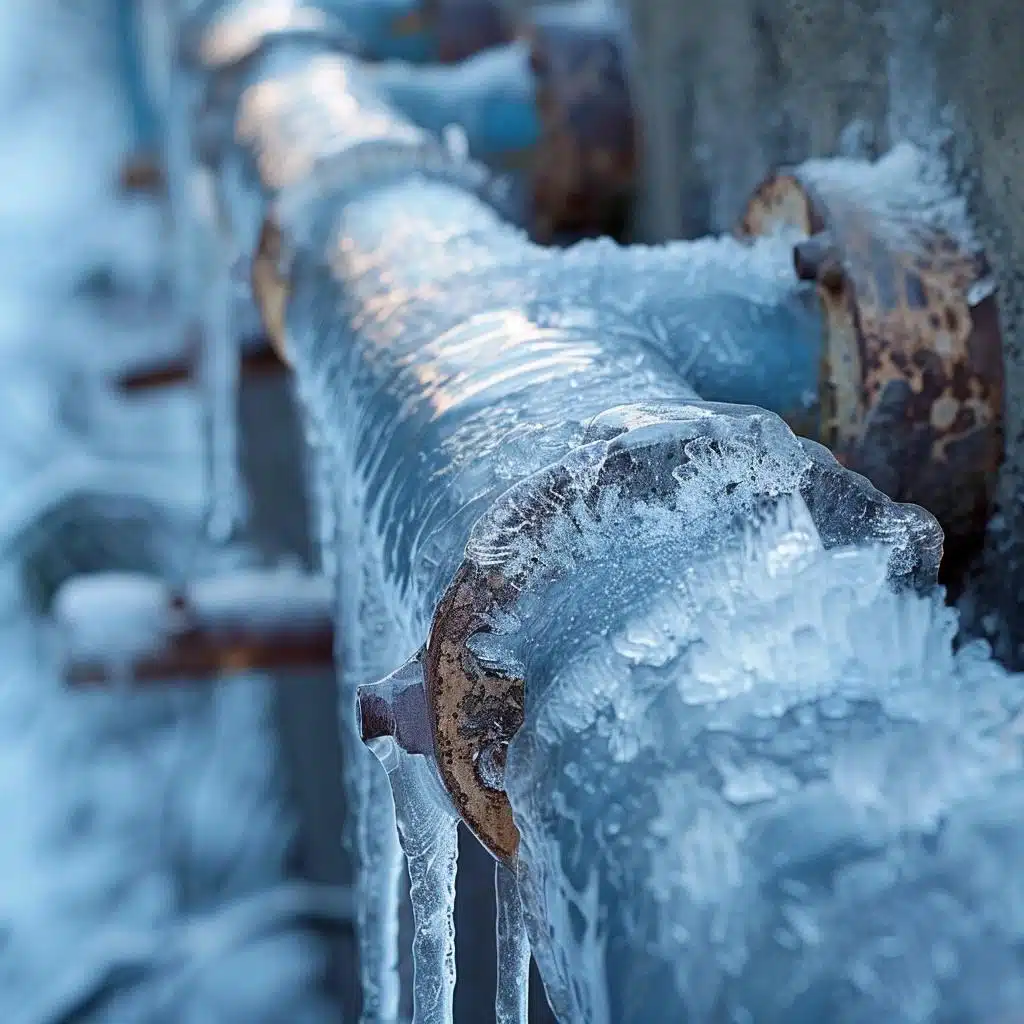We have stumbled upon this article about How to Prevent Your Pipes From Freezing listed below on the web and believe it made sense to discuss it with you on this page.

Winter can wreak havoc on your pipes, especially by freezing pipes. Below's just how to avoid it from taking place and what to do if it does.
Introduction
As temperature levels decrease, the danger of icy pipes rises, possibly causing costly repair work and water damages. Understanding just how to avoid frozen pipes is vital for homeowners in chilly climates.
Avoidance Tips
Insulating prone pipelines
Wrap pipes in insulation sleeves or utilize warmth tape to safeguard them from freezing temperatures. Concentrate on pipelines in unheated or outside locations of the home.
Heating methods
Maintain indoor areas sufficiently warmed, particularly locations with plumbing. Open cabinet doors to allow warm air to distribute around pipes under sinks.
How to identify frozen pipes
Look for decreased water circulation from faucets, uncommon smells or noises from pipes, and noticeable frost on exposed pipelines.
Long-Term Solutions
Structural adjustments
Consider rerouting pipes away from exterior wall surfaces or unheated areas. Include additional insulation to attic rooms, basements, and crawl spaces.
Upgrading insulation
Purchase top quality insulation for pipelines, attic rooms, and wall surfaces. Appropriate insulation assists keep regular temperatures and reduces the danger of frozen pipes.
Shielding Exterior Plumbing
Yard pipes and outside faucets
Separate and drain pipes garden pipes before winter season. Set up frost-proof faucets or cover exterior taps with shielded caps.
Comprehending Frozen Pipes
What creates pipelines to freeze?
Pipelines ice up when revealed to temperature levels listed below 32 ° F (0 ° C) for extended durations. As water inside the pipes freezes, it broadens, taxing the pipeline wall surfaces and possibly causing them to burst.
Dangers and damages
Frozen pipelines can cause water supply disruptions, residential or commercial property damage, and pricey repairs. Burst pipes can flooding homes and create comprehensive structural damage.
Indications of Frozen Pipes
Determining icy pipes early can stop them from breaking.
What to Do If Your Pipelines Freeze
Immediate actions to take
If you presume icy pipelines, keep taps open up to soothe stress as the ice thaws. Utilize a hairdryer or towels taken in hot water to thaw pipes gradually.
Final thought
Avoiding icy pipelines calls for positive measures and quick feedbacks. By comprehending the reasons, indications, and safety nets, house owners can protect their plumbing during cold weather.
5 Ways to Prevent Frozen Pipes
Drain Outdoor Faucets and Disconnect Hoses
First, close the shut-off valve that controls the flow of water in the pipe to your outdoor faucet. Then, head outside to disconnect and drain your hose and open the outdoor faucet to allow the water to completely drain out of the line. Turn off the faucet when done. Finally, head back to the shut-off valve and drain the remaining water inside the pipe into a bucket or container. Additionally, if you have a home irrigation system, you should consider hiring an expert to clear the system of water each year.
Insulate Pipes
One of the best and most cost-effective methods for preventing frozen water pipes is to wrap your pipes with insulation. This is especially important for areas in your home that aren’t exposed to heat, such as an attic. We suggest using foam sleeves, which can typically be found at your local hardware store.
Keep Heat Running at 65
Your pipes are located inside your walls, and the temperature there is much colder than the rest of the house. To prevent your pipes from freezing, The Insurance Information Institute suggests that you keep your home heated to at least 65 degrees, even when traveling. You may want to invest in smart devices that can keep an eye on the temperature in your home while you’re away.
Leave Water Dripping
Moving water — even a small trickle — can prevent ice from forming inside your pipes. When freezing temps are imminent, start a drip of water from all faucets that serve exposed pipes. Leaving a few faucets running will also help relieve pressure inside the pipes and help prevent a rupture if the water inside freezes.
Open Cupboard Doors
Warm your kitchen and bathroom pipes by opening cupboards and vanities. You should also leave your interior doors ajar to help warm air circulate evenly throughout your home.

We had been brought to that editorial about Preventing and dealing with frozen pipes from someone on a different domain. Sharing is good. Helping others is fun. Thanks so much for going through it.
Visit Link